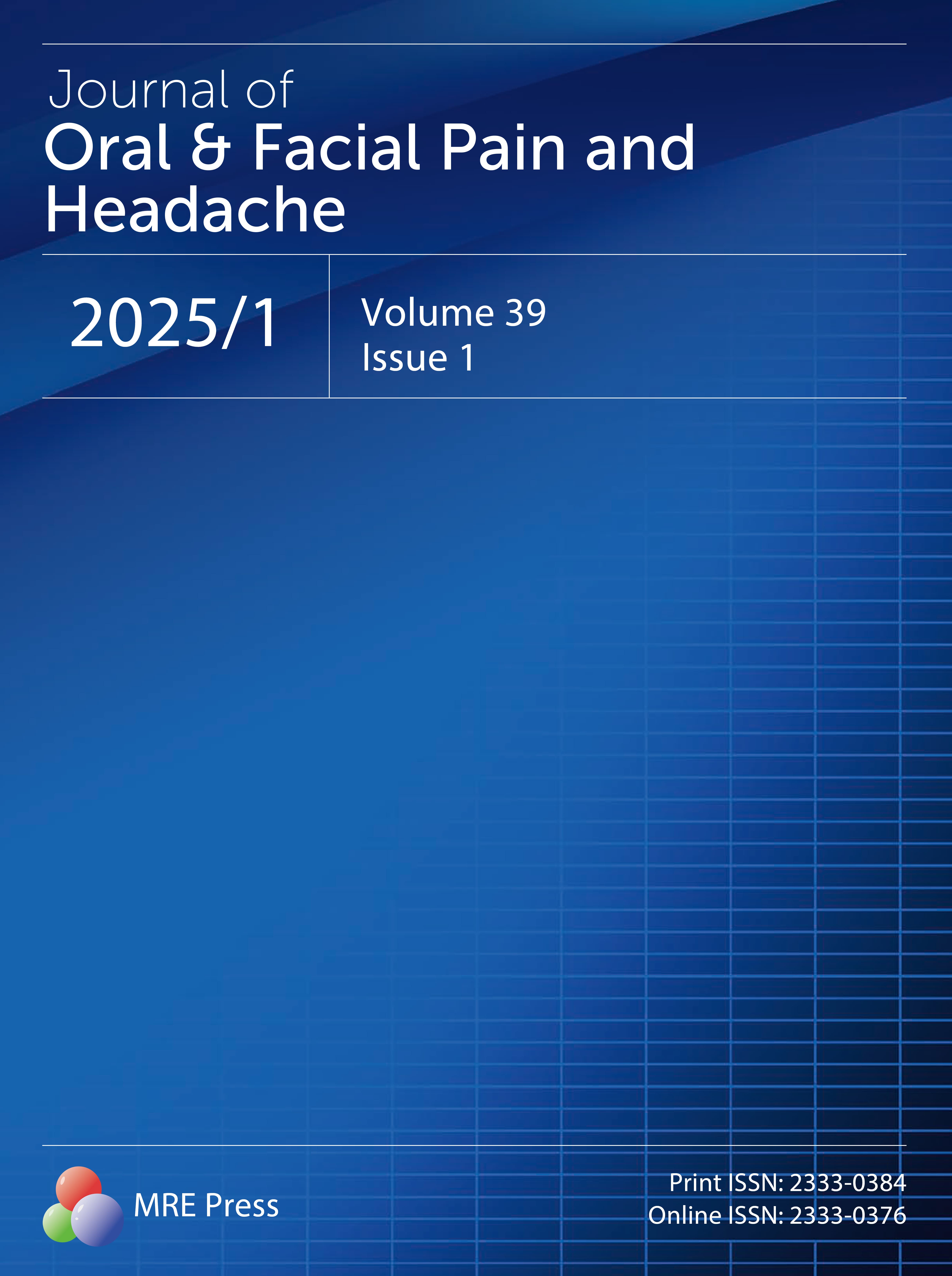Title
Author
DOI
Article Type
Special Issue
Volume
Issue
Article Menu
Export Article
More by Authors Links
Article Data
- Views 654
- Dowloads 34
Journal of Oral & Facial Pain and Headache (OFPH) is published by MRE Press from Volume 38 lssue 1 (2024). Previous articles were published by another publisher on a subscription basis, and they are hosted by MRE Press on www.jofph.com as a courtesy and upon agreement with Journal of Oral & Facial Pain and Headache.
Original Research
Open AccessAppropriate Use of Predictive Values in Chnical Decision Making and Evaluating Diagnostic Tests for TMD
Appropriate Use of Predictive Values in Chnical Decision Making and Evaluating Diagnostic Tests for TMD
- Stephen R. Levitt1
- Michael W. McKinney1
1Department of Psychiatry and Pain Program, Chapel Hill, North Carolina and Director of Research Pain Resource Center, Inc Durham, North Carolina, USA
Abstract
Temporomandibular disorder literature contains serious misunderstandings and misapplications of statistical concepts, including predictive values, in evaluating diagnostic modalities and in clinical decision making. The use of general population prevalence data for temporomandibular disorders to evaluate positive predictive values of diagnostic modalities is shown to be invalid. The positive predictive value of a diagnostic tool should not be used to evaluate the efficacy of the tool or to confirm the presence of temporomandibular disorders when the pretest likelihood of temporomandibular disorder is low (eg, 10%). In such a situation, the TMJ Scale's negative predictive value of 98% supports the dentist's clinical impression of the absence of temporomandibular disorders. When the pretest likelihood of TMD is high (eg, 90%), the TMJ Scale's positive predictive value of 97% supports the dentist's clinical impression of the presence of temporomandibular disorders. The predictive values of the subscales of the TMJ Scale that measure joint dysfunction and stress may be used to further refine the diagnostic impression. When the dentist is unsure of the presence of TMD and makes a pretest estimate of 50%, the TMJ Scale's positive predictive value of 81% and negative predictive value of 83% substantially improve the accuracy of clinical decisions.
Cite and Share
Stephen R. Levitt, Michael W. Mckinney. Appropriate Use of Predictive Values in Chnical Decision Making and Evaluating Diagnostic Tests for TMD. Journal of Oral & Facial Pain and Headache. 1994. 8(3);298-308.
References

Abstracted / indexed in
Science Citation Index (SCI)
Science Citation Index Expanded (SCIE)
BIOSIS Previews
Scopus
Cumulative Index to Nursing and Allied Health Literature (CINAHL)
Submission Turnaround Time
Editorial review: 1 - 7 days
Peer review: 1 - 3 months
Publish Ahead of Print: within 2 months after being accepted
Notes: Your information is kept confidential throughout the review process.
Top
